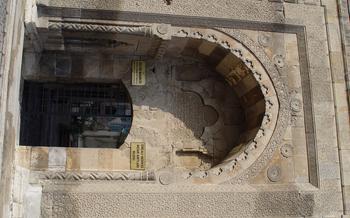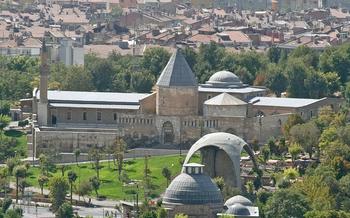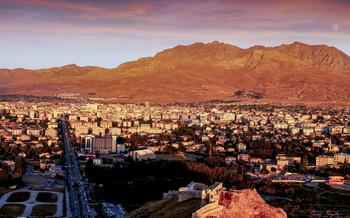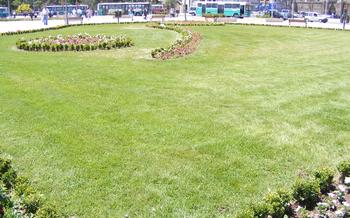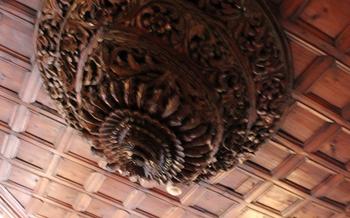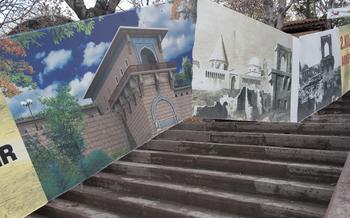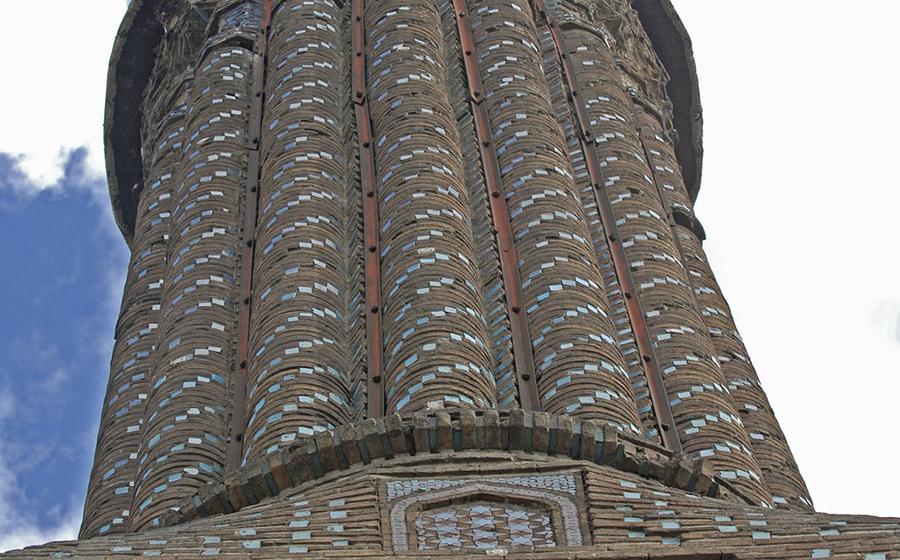
Çifte Minareli Medrese
- Location of the Çifte Minareli Medrese: A Crossroads of History and Culture
- Architectural Features of the Çifte Minareli Medrese
- Interior of the Çifte Minareli Medrese: A Place of Learning and Spirituality
- Educational Significance of the Çifte Minareli Medrese
- Restoration and Preservation of the Çifte Minareli Medrese
- Visiting the Çifte Minareli Medrese
- Nearby Attractions and Landmarks
- Historical Context of the Çifte Minareli Medrese
- Cultural Significance of the Çifte Minareli Medrese
- Interactive and Immersive Experiences
- Accessibility and Facilities
- Photography and Social Media
- Local Cuisine and Dining Options
- Insider Tip:
Location of the Çifte Minareli Medrese: A Crossroads of History and Culture
In the heart of Erzurum, a city steeped in history and tradition, stands the Çifte Minareli Medrese, a testament to the architectural prowess and cultural heritage of the Seljuk Empire. Conveniently situated in the city center, the medrese is within easy reach of other historical landmarks and cultural attractions. The medrese's proximity to the Ulu Cami, Erzurum Castle, and the vibrant local markets makes it an ideal starting point for exploring the city's rich past. Whether arriving by foot, public transportation, or private vehicle, visitors will find the medrese easily accessible from various parts of the city. The medrese's specific address is Yakutiye Mahallesi, Yakutiye Caddesi No:48, 25240 Yakutiye/Erzurum, Turkey.
Architectural Features of the Çifte Minareli Medrese
The Çifte Minareli Medrese is renowned for its striking architectural features that showcase the artistry and craftsmanship of the Seljuk era. The medrese's most distinctive characteristic is its twin minarets, which rise elegantly from the corners of the building. These minarets, adorned with intricate carvings and glazed tiles, create a visually captivating sight that has become synonymous with the medrese.
The facade of the medrese is adorned with exquisite carvings and decorations that reflect the Seljuk architectural style. Geometric patterns, floral motifs, and Quranic inscriptions are skillfully intertwined, creating a mesmerizing visual tapestry. The use of glazed tiles adds a vibrant touch of color and complements the intricate carvings, enhancing the overall aesthetic appeal of the medrese.
The architectural style of the Çifte Minareli Medrese exemplifies the transition from the Seljuk to the Beylik period. It incorporates elements of both styles, blending the grandeur of Seljuk architecture with the simplicity of the Beylik era. This unique blend creates a harmonious and visually appealing structure that stands as a testament to the architectural prowess of the Seljuk and Beylik periods.
Interior of the Çifte Minareli Medrese: A Place of Learning and Spirituality
The interior of the Çifte Minareli Medrese is as captivating as its exterior, showcasing a harmonious blend of architectural beauty and functional design. As you step into the spacious courtyard, you are greeted by a sense of tranquility and serenity. This central gathering place provided students and scholars with a communal space for socializing, exchanging ideas, and engaging in various activities.
At the heart of the courtyard, the prayer hall stands as a testament to the medrese's religious significance. Its intricate mihrab, a niche indicating the direction of Mecca, is adorned with delicate carvings and colorful tiles, creating a visually stunning focal point. The pulpit, where religious lectures and sermons were delivered, is equally impressive, showcasing the exquisite craftsmanship of the Seljuk artisans.
Beyond the prayer hall lies the library, a treasure trove of knowledge and wisdom. Its collection of valuable manuscripts and books covered a wide range of subjects, from theology and law to علوم and philosophy. These precious texts were carefully preserved and studied by the medrese's scholars, contributing to the intellectual and spiritual growth of its students.
The medrese also provided living quarters for students and scholars, fostering a sense of community and camaraderie. These dormitories offered simple but comfortable accommodations, allowing students to focus on their studies and personal development. The medrese's thoughtful design catered to the needs of its occupants, creating an environment conducive to learning and contemplation.
Educational Significance of the Çifte Minareli Medrese
The Çifte Minareli Medrese served as a renowned center of Islamic learning and scholarship, attracting students and scholars from across the region. The medrese offered a comprehensive curriculum that encompassed various subjects, including theology, law, and sciences. It was particularly renowned for its teachings in Islamic law and jurisprudence, and produced many distinguished scholars who went on to hold influential positions in the Seljuk administration and beyond.
The medrese's faculty consisted of erudite scholars and teachers who were experts in their respective fields. Among the notable scholars who taught at the medrese was the renowned theologian and jurist, Kadı Burhaneddin Ahmed, who authored several influential works on Islamic law. The medrese's library housed a valuable collection of manuscripts and books, which served as a rich resource for students and scholars engaged in research and study.
The Çifte Minareli Medrese played a pivotal role in the development of Islamic thought and culture in the region. It served as a platform for intellectual discourse, debate, and the exchange of ideas, contributing significantly to the advancement of Islamic scholarship. The medrese's graduates disseminated knowledge and learning throughout the Seljuk Empire and beyond, leaving a lasting impact on the intellectual and cultural landscape of the region.
Restoration and Preservation of the Çifte Minareli Medrese
Over the centuries, the Çifte Minareli Medrese has undergone several restoration and preservation efforts to maintain its structural integrity and architectural beauty. One of the most significant restorations took place in the 19th century under the Ottoman Empire. During this time, the medrese's roof was repaired and reinforced, and its interior was renovated to restore its original splendor.
In recent years, the Turkish government has undertaken a comprehensive restoration project to ensure the long-term preservation of this historical landmark. This project involves meticulous repairs to the medrese's exterior, including the restoration of its intricate carvings and glazed tiles. The interior of the medrese is also being carefully restored, with a focus on preserving the original layout and features of the prayer hall, library, and dormitories.
Preserving the Çifte Minareli Medrese is crucial for safeguarding Turkey's rich cultural heritage. By investing in its restoration and upkeep, the Turkish government is ensuring that future generations can continue to appreciate and learn from this architectural masterpiece. These ongoing efforts demonstrate the importance placed on preserving the country's historical treasures and ensuring their accessibility to both locals and international visitors.
Visiting the Çifte Minareli Medrese
To fully appreciate the architectural splendor and historical significance of the Çifte Minareli Medrese, it is best to visit during the shoulder seasons, spring (April-May) and autumn (September-October), when the weather is pleasant and the crowds are smaller. This will allow you to explore the medrese at your own pace and capture stunning photographs without distractions.
Guided tours are available for a more immersive experience. Knowledgeable guides will provide insights into the medrese's history, architectural features, and educational significance. Audio guides are also available in multiple languages for self-guided tours.
When visiting the medrese, it is important to observe proper etiquette and dress code. As a respectful traveler, dress modestly and avoid wearing shorts, tank tops, or revealing clothing. Women may be required to cover their heads with a headscarf.
The entrance fee for the medrese is minimal, and tickets can be purchased at the entrance. It is advisable to carry cash, as credit cards may not be accepted.
Nearby Attractions and Landmarks
The Çifte Minareli Medrese stands as a testament to the rich history and cultural heritage of Erzurum. Its proximity to other historical sites, such as the Ulu Cami (Great Mosque) and the Erzurum Castle, makes it an ideal starting point for exploring the city's architectural wonders.
The Ulu Cami, located just a short walk from the medrese, is another architectural masterpiece of the Seljuk era. With its stunning turquoise tiles, intricate carvings, and towering minarets, it is a must-visit for anyone interested in Islamic architecture.
The Erzurum Castle, perched atop a hill overlooking the city, offers breathtaking panoramic views of the surrounding landscape. Explore its ancient fortifications, dungeons, and towers, and step back in time to the days when the castle served as a stronghold against invading armies.
Beyond these historical landmarks, Erzurum boasts a vibrant local market and bazaar scene. The Arasta Bazaar, located near the Ulu Cami, is a treasure trove of traditional handicrafts, carpets, jewelry, and local delicacies. Immerse yourself in the bustling atmosphere, haggle with friendly vendors, and take home unique souvenirs to cherish your visit to Erzurum.
To make the most of your time in Erzurum, consider crafting an itinerary that combines a visit to the Çifte Minareli Medrese with other attractions. Start your day by exploring the medrese's architectural marvels and learning about its historical significance. Then, delve into the spiritual ambiance of the Ulu Cami and marvel at its exquisite tile work. As the sun sets, make your way to the Erzurum Castle to witness the city bathed in a warm golden glow. Conclude your day by savoring the flavors of Erzurum's local cuisine at one of the many restaurants near the medrese.
Whether you are a history buff, an architecture enthusiast, or simply a traveler seeking unique experiences, Erzurum offers a wealth of attractions to captivate your senses. Immerse yourself in the city's rich heritage, explore its hidden gems, and create unforgettable memories that will last a lifetime.
Historical Context of the Çifte Minareli Medrese
The construction of the Çifte Minareli Medrese coincided with a period of significant political and social developments within the Seljuk Empire. During the reign of Sultan Alaeddin Keykubad I, the Seljuks embarked on a campaign of territorial expansion, extending their influence over vast regions of Anatolia and beyond. This period of conquest and consolidation shaped the political landscape of the region, with Erzurum emerging as a strategic frontier town.
The establishment of the medrese in Erzurum was part of the Seljuks' broader efforts to promote Islamic learning and culture throughout their empire. By investing in education and scholarship, the Seljuks sought to create a cadre of learned individuals who would contribute to the intellectual and spiritual development of the region. The medrese served as a hub for religious instruction, legal studies, and علوم, attracting students from across the Seljuk domains.
The interactions between the Seljuk rulers and the local communities in Erzurum were marked by a spirit of cooperation and mutual respect. The Seljuks recognized the importance of integrating the local population into their administrative and cultural structures. This led to a harmonious coexistence between the Seljuk elite and the indigenous communities, contributing to the city's stability and prosperity.
The Mongol invasions of the 13th century brought about a period of upheaval and destruction in Erzurum and the surrounding region. The medrese, like many other landmarks, suffered damage during this turbulent period. However, the resilience of the local communities and the enduring legacy of the Seljuks ensured that the medrese would eventually be restored and continue to serve as a center of learning and culture in the years that followed.
Cultural Significance of the Çifte Minareli Medrese
The Çifte Minareli Medrese stands as a testament to the rich cultural heritage of the Seljuk Empire. Its architectural grandeur, intricate craftsmanship, and historical significance make it a symbol of Islamic art and architecture. The medrese played a vital role in preserving and transmitting Islamic knowledge and traditions, serving as a center of learning and scholarship for centuries. It attracted renowned scholars and students from across the region, fostering an environment of intellectual discourse and cultural exchange.
The medrese's significance extends beyond its educational function. It served as a gathering place for scholars, students, and pilgrims, creating a vibrant community of knowledge and spirituality. Within its walls, religious ceremonies, festivals, and celebrations were held, strengthening the bonds of faith and community among the people of Erzurum. The medrese's architectural features, including the intricate carvings, glazed tiles, and calligraphy, reflect the cultural and artistic achievements of the Seljuk period. These decorative elements showcase the mastery of Seljuk artisans and their ability to blend Islamic motifs with local traditions, creating a unique and visually stunning masterpiece.
Furthermore, the Çifte Minareli Medrese played a crucial role in shaping the cultural identity and heritage of the region. As a center of Islamic learning and scholarship, it influenced the development of religious thought, philosophy, and literature in Erzurum and beyond. The medrese's legacy continues to inspire and educate future generations, serving as a reminder of the rich cultural heritage that has shaped the region's identity.
Interactive and Immersive Experiences
To enhance the visitor experience at the Çifte Minareli Medrese, interactive and immersive elements have been introduced. Visitors can don virtual reality headsets to embark on a journey through time, witnessing the construction of the medrese and experiencing life as a student in the 13th century. Augmented reality displays overlay historical information and architectural details, allowing visitors to explore the medrese in a new and engaging way. Hands-on activities, such as calligraphy workshops and traditional crafts demonstrations, provide a deeper understanding of the artistic and cultural traditions of the Seljuk era. Storytelling sessions and theatrical performances bring the history of the medrese to life, immersing visitors in the vibrant intellectual and spiritual atmosphere of the past. Educational resources and interactive displays are strategically placed throughout the complex, enabling visitors to delve into the rich history, architecture, and significance of the Çifte Minareli Medrese.
Accessibility and Facilities
The Çifte Minareli Medrese is committed to ensuring an inclusive and accessible experience for all visitors. Wheelchair ramps and accessible pathways have been installed throughout the complex, allowing individuals with disabilities to navigate the site with ease. Restrooms, drinking fountains, and seating areas are strategically located within the medrese to provide comfort and convenience for visitors.
For those seeking additional information or guidance, information desks or visitor centers are available within the medrese complex. Multilingual guides or audio guides are offered to assist non-Turkish speaking visitors in exploring the site's rich history and significance. These resources provide translations, explanations, and insights, enhancing the overall visitor experience.
Photography and Social Media
The Çifte Minareli Medrese offers a treasure trove of opportunities for photography enthusiasts and social media aficionados. With its captivating architecture, intricate carvings, and serene ambiance, the medrese provides a picturesque backdrop for capturing stunning images.
To make the most of your photographic journey, be sure to explore the various vantage points within the complex. The courtyard, with its twin minarets, offers a majestic perspective. The intricate carvings on the facade provide a feast for the eyes, inviting you to capture the artistry and craftsmanship of the Seljuk masters. The prayer hall, with its ornate mihrab and pulpit, exudes a sense of spirituality that translates beautifully into photographs.
While capturing the beauty of the medrese, it is essential to be respectful of the religious and cultural significance of the site. Avoid using flash photography, especially during prayer times, and be mindful of other visitors who may be seeking a tranquil environment.
To share your experiences with the world, utilize the power of social media. Platforms like Instagram and Facebook provide an excellent opportunity to showcase your stunning photographs and connect with fellow travelers and history enthusiasts. Use relevant hashtags such as #CifteMinareliMedrese, #Erzurum, and #SeljukArchitecture to increase the visibility of your posts and engage with a broader audience.
Documenting your visit through photography and sharing your experiences on social media not only preserves your memories but also contributes to the promotion and appreciation of this magnificent historical landmark.
Local Cuisine and Dining Options
When visiting the Çifte Minareli Medrese, immersing yourself in the local culinary scene is a must. The streets surrounding the medrese are lined with charming cafes and traditional restaurants, offering a delectable array of Turkish and regional specialties.
For a true taste of Erzurum's cuisine, try the cağ kebabı, a dish consisting of grilled lamb skewers served with fresh vegetables and flatbread. Another local favorite is mantı, a type of ravioli filled with minced meat and topped with yogurt, tomato sauce, and garlic.
For those seeking vegetarian or vegan options, there are several restaurants in the area that cater to these dietary preferences. You can indulge in dishes such as imam bayıldı, stuffed eggplants with a flavorful tomato and onion filling, or kısır, a bulgur salad with vegetables and herbs.
When dining in local establishments, it is important to observe local customs. Remember to remove your shoes before entering a restaurant if requested and be respectful of local dress codes. Enjoying a meal in Erzurum is not just about satisfying your hunger but also about embracing the vibrant local culture.
Insider Tip:
As you explore the Çifte Minareli Medrese, take a moment to venture into the hidden courtyard behind the main prayer hall. This tranquil oasis, adorned with a serene fountain and lush greenery, offers a moment of respite from the bustling city. Sit on one of the benches beneath the shade of the trees and soak in the peaceful ambiance, allowing the history and tranquility of the medrese to wash over you. It's the perfect spot to reflect on the rich legacy of this architectural marvel and appreciate its enduring significance as a center of learning and spirituality.
